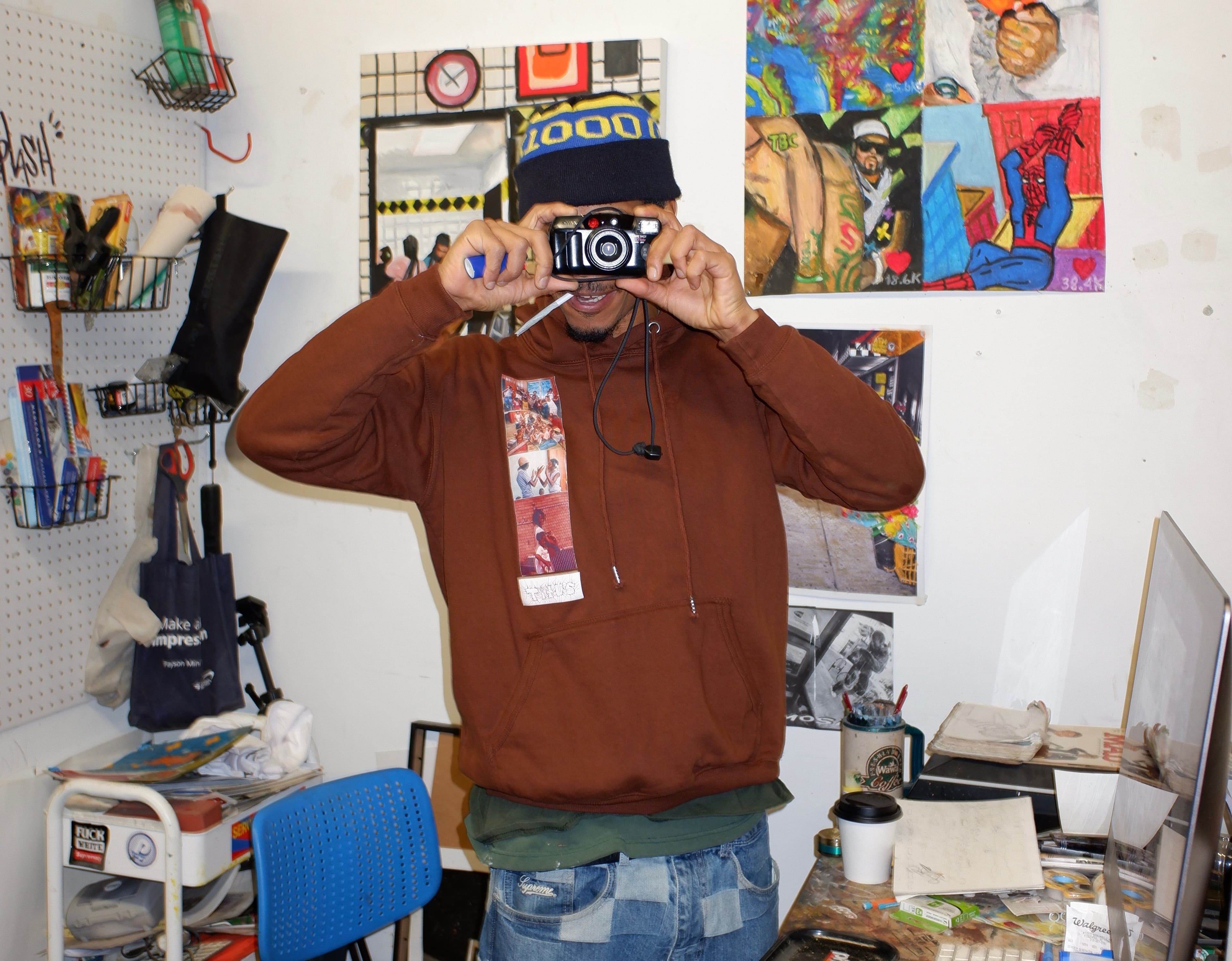Dani
I'm a big fan of your work. The first paintings of yours I saw were of the Dipset vs. the LOX VERZUZ battle. I saw them while scrolling through Instagram and they made me stop and really look — I was so captivated by them. This probably isn't a good thing, but it's honestly pretty rare that I stop my scroll to carefully look and think about something I see. You often paint what you see in popular culture. These days, we're constantly inundated with pop cultural content all the time, but you can only paint so much. How do you filter through the fluff and choose what you actually want to put into your artwork?
Gregory
Honestly, I spend a lot of time on WorldStar, just because it’s part of my routine. I don't necessarily go there for inspiration, but by the time I leave, I'm just so shell-shocked and my mind is blown by how crazy we've gotten as a culture and society. So I end up closing the app with all these images in my head, and I'm like: “Wow, that was really intense. That made me laugh, that was really crazy, that made me sad.” So I know a lot of these images will be ingrained in my head and sometimes I want to memorialize them.
Life itself is beautiful, it’s art. So some of these moments, I felt like, wow, this was something that I could picture us looking back at in 50 years and being like: “Oh, that was insane.” I make these paintings as a kind of early retrospect.
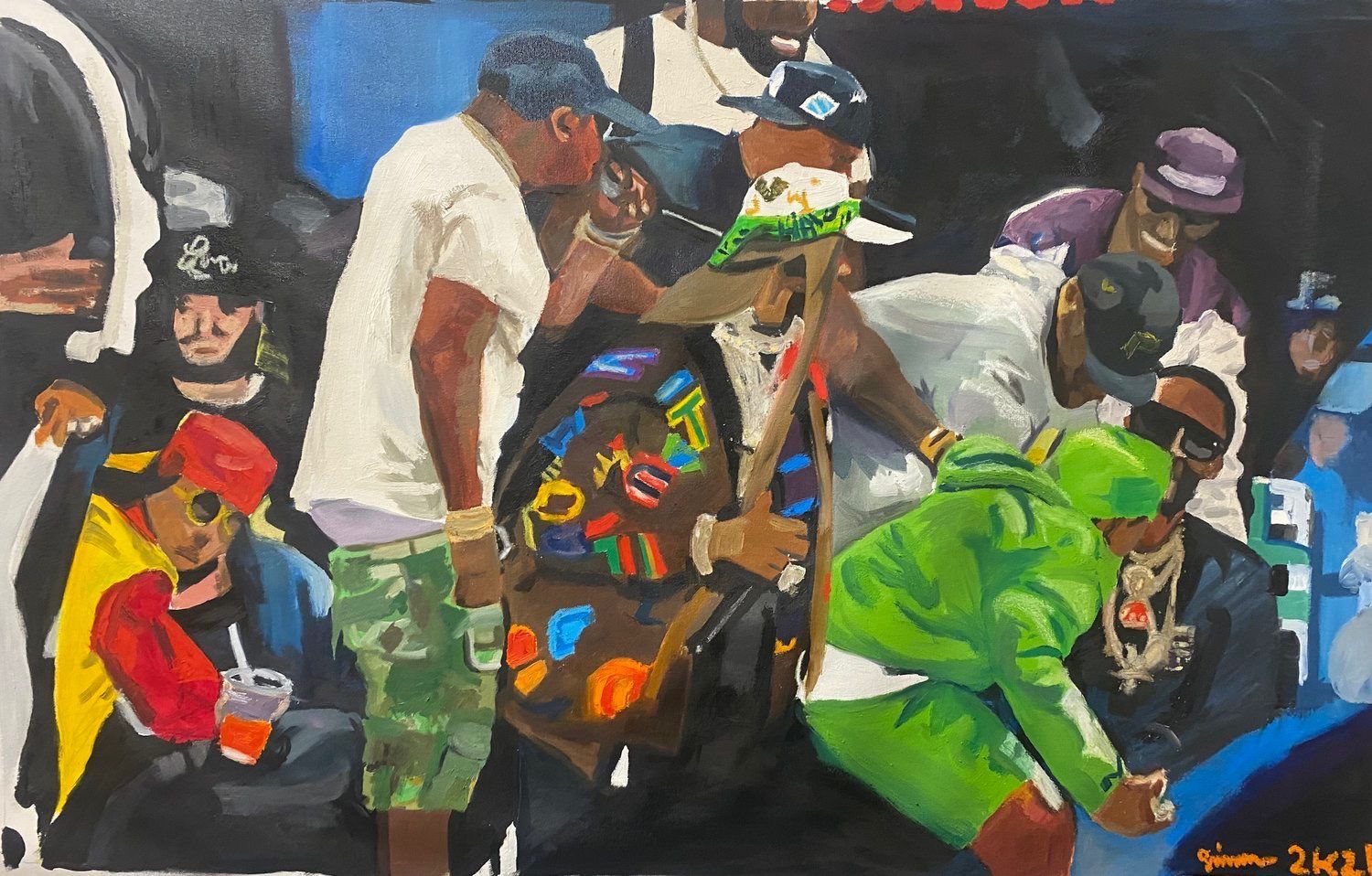
Dani
Right, it's a monument to life. That's interesting, because some of your work feels monumental — like those VERZUZ paintings — but a lot of it also captures everyday life, which I think also deserves to be memorialized in a way. How do you find the balance between those scales?
Gregory
I think the VERZUZ paintings were special, because that was one of the first bigger moments I captured. A lot of my pieces are very random. Some of them are mundane, but different at the same time — there are stories behind them. With the VERZUZ paintings, that battle was something I wanted to memorialize, because it was something that the whole world may remember. A lot of these smaller moments I want to memorialize because we may forget.
Like you said, we’re so inundated with all this content that a lot of it becomes fleeting and we forget about it. So I try to take these moments that you’ve maybe never heard of and tell that story through these paintings. Sometimes I try to make us laugh, sometimes I try to make us think. It’s all part of the conversation. Sometimes those smaller moments are worth talking about. There’s beauty in those moments and there’s conversations surrounding those moments I want to bring to the table.
"We’re so inundated with all this content that a lot of it becomes fleeting and we forget about it. So I try to take these moments that you’ve maybe never heard of and tell that story through these paintings. Sometimes I try to make us laugh, sometimes I try to make us think. It’s all part of the conversation."
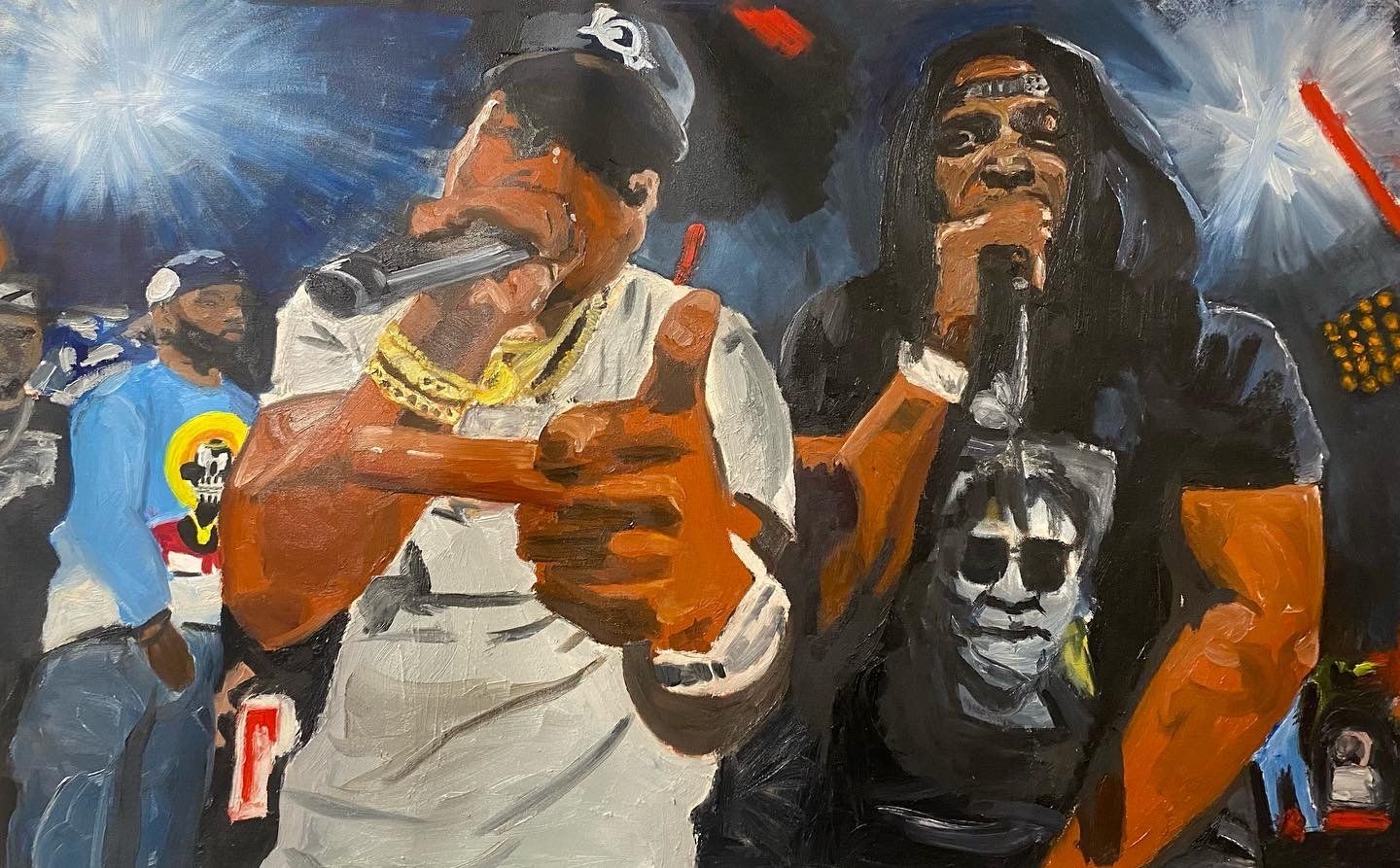
Dani
I feel the same way. Looking at your work or even thinking about how you stopped to take a picture of that store owner washing the sidewalk in front of his shop — if you had never stopped to take that picture, I never would have thought about that guy taking care of his store. You mentioned that you have a series of photographs of people doing that around the city. You've been in New York for a minute — how do you think the city has influenced your practice and what do you take from the city as you make your art?
Gregory
I just really like the movement of the city. It’s dense, it’s packed with so many different layers, colors, and variety. It’s just that grittiness. I really take all that into consideration and try to make my work like that, make it lively, make it action-packed, make it interesting, and keep it gritty. There’s always a grittiness to my work. It can be beautiful and crazy at once.
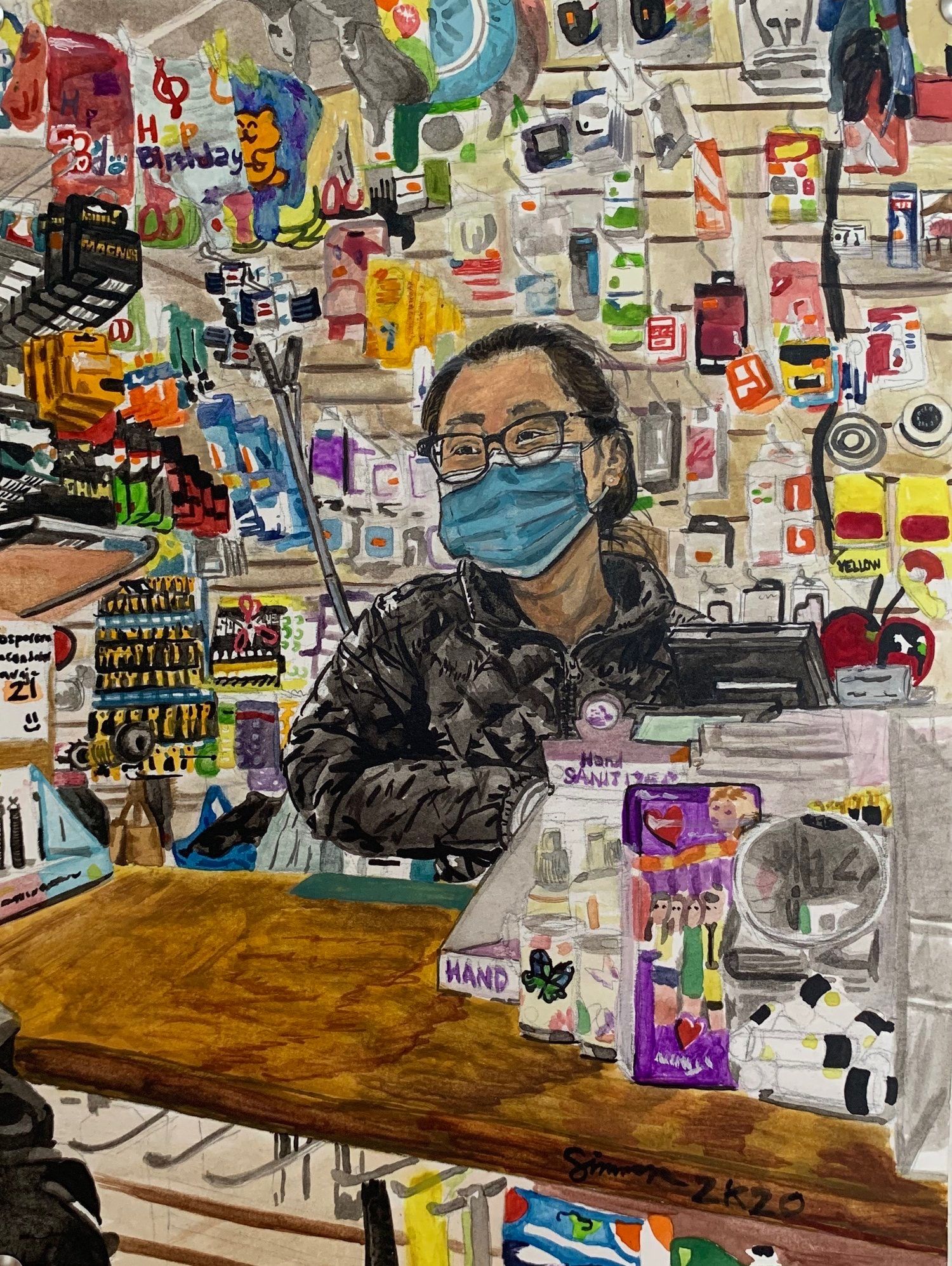
Dani
We've also talked about the different communities that you've been a part of, whether that be the skate community in Atlantic City or the art scene in New York. How do you see yourself as a part of the communities in New York?
Gregory
I'm just absorbing other people's energy, just seeing things from a different scope, not so much in an artistic mode, but just trying to be present, trying to really feel a purpose. I feel like we all have a purpose, we all serve as part of the world — our hands move things and shape things. When I’m painting, I’m trying to shape conversations. When I’m out in these communities, I’m shaping myself to be more in tune with people’s struggles, so we can all work together to create not only conversations but also more action.
"I feel like we all have a purpose, we all serve as part of the world — our hands move things and shape things. When I’m painting, I’m trying to shape conversations. When I’m out in these communities, I’m shaping myself to be more in tune with people’s struggles, so we can all work together to create not only conversations but also more action."
Dani
I can definitely feel these real-life, close-up struggles in your work, but I also see a consistent connection to what we see in the media. I read your artist's statement, and you said the way you taught yourself art was by copying images from TV. So you've really been depicting images from the media for your entire artistic career. How has that process changed as you've grown as an artist?
Gregory
Just being part of 21st-century America, where we're just flooded with logos and entertainment, that type of stuff has always captured my mind first. And I've always liked to just draw what I see. I have a friend who was getting at me critically about pushing my creativity. He wanted to see things that weren’t just what I had seen on the net or whatever. So as I get older and as I pursue this art form more, I’m trying to draw from the imagination or think about the subject longer so I can form a visual that comes more from within than without. But to me, I always appreciate these little blips of time that come from something external.
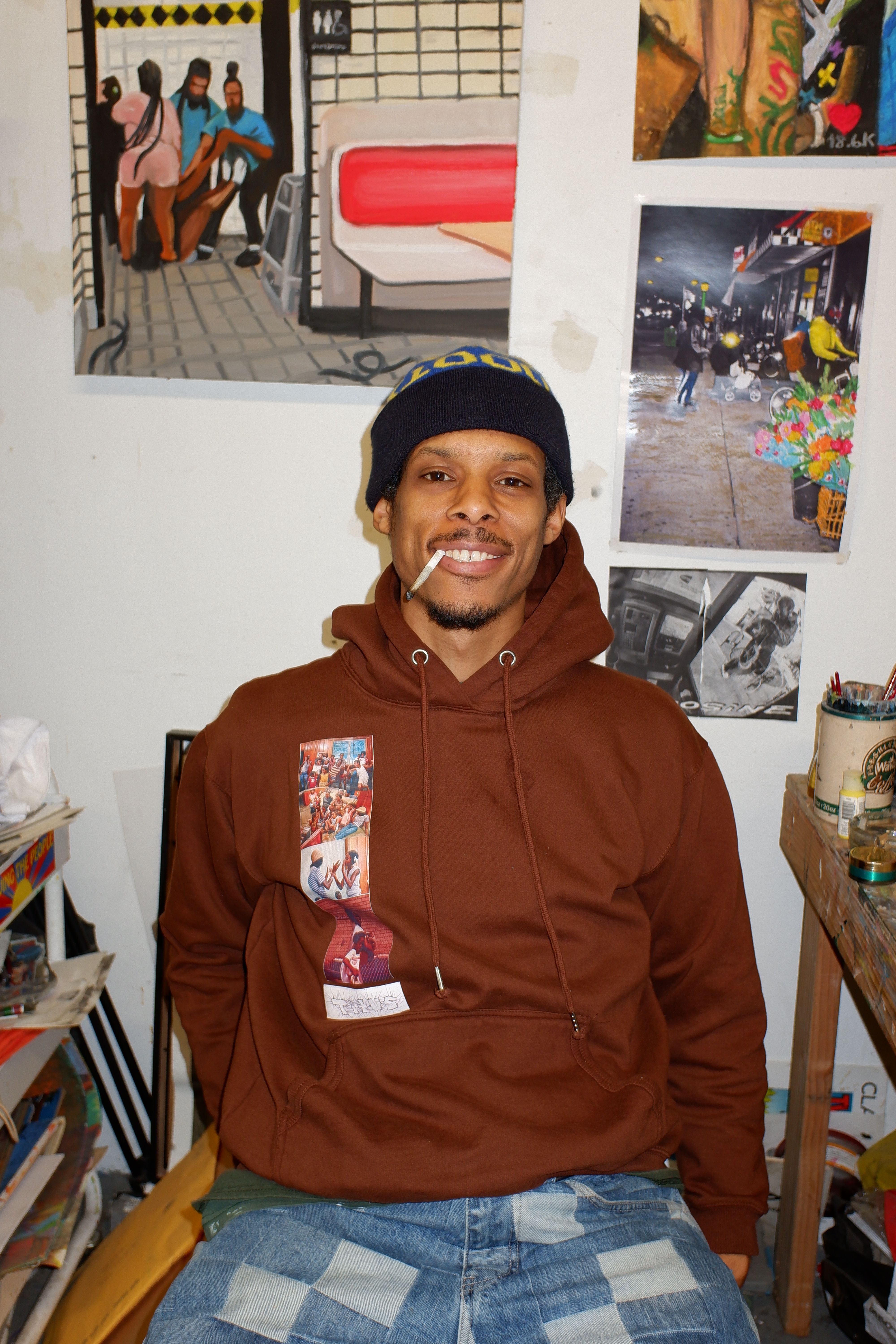
Dani
The initial stimulus might be external, but the reason that you want to depict it through your art is because it stimulates something internal. It's like what you were saying — when you close that WorldStar app, you want to paint certain images because they made you feel a certain way. I think that's closely linked to what you said about wanting to sometimes provoke deeper conversations surrounding the work. You've said that you want people to look a bit deeper than the playful imagery and all these beautiful, bold colors in your work, and think about some of the discussions that may underlie the visual content. What are some of those discussions?
Gregory
I come from African American culture, which has a lot of stereotypes, a lot of stigma worldwide. We're like a puzzle — we do a lot of inventing and influencing, and people are drawn to us, but they don’t want to be us, because there’s also more stigmas within the community of ignorance, violence, genocide, whatever you want to call it, and being withdrawn from who we may originally be. A lot of us are still trying to find out who we are because we don't have much of an origin story other than that we were slaves brought here. So I've tried to take a lot of these subjects that we see, like the tropes of fights on WorldStar or the milk crate challenge or even famous actors in drag that make characters that we all know and love. I want to have the conversation a little bit more. Why are we like this? Why do we do this? Is it good? Is it bad? Is it indifferent? What is this? Who are we? I enjoy doing that — that’s why I find myself wanting to present it to the world. I want to create a discourse from that perspective of a Black man in America.

Dani
I feel like those conversations will often stem from your work. Whenever you create something that's true to yourself, there's always going to be some part of your identity that's present, whether it's overt or not. You've talked about how growing up as a skater contributed to your understanding of your identity as a Black man and as an artist. How exactly has that skate culture informed your sense of self and the art you make?
Gregory
Thankfully in South Jersey, where I’m from, the skate community that I was a part of was very diverse. I was a Black kid, there was a Jewish kid, there was a Korean kid, there was an Italian kid. To me, life was always diverse. I didn’t realize there was this world outside of that until I got older and ventured off into the world. For the longest time, that’s why a lot of my art was just things that I saw, which felt kind of meaningless. But around 2020 when all the BLM stuff happened, I definitely had to take a look internally. I think that’s where I found my current voice of wanting to create deeper conversations around the things I see and paint.
Skateboarding gave me an open mind to see the world, to see things differently, to see things from as many angles as I can. That understanding has helped me zone in on this one range — for now, I’m not going to say this is all I can do — that I want to speak about now. So finding my voice in skateboarding helped me find my voice in art.
Dani
There's definitely a strong voice in your work. It's also cool to see you exploring new avenues of expression — I know you've been pretty into photography recently. Can you tell me more about where you see your art going from here?
Gregory
Absolutely. I'm hoping that I can reach more of the international stage, I’m hoping to be inspired more. I hope there will be more eyes and more conversations from every walk of life. I’m hoping this will be a journey upwards with a lot of great moments that will continue to inspire. That’s really what it’s about.
